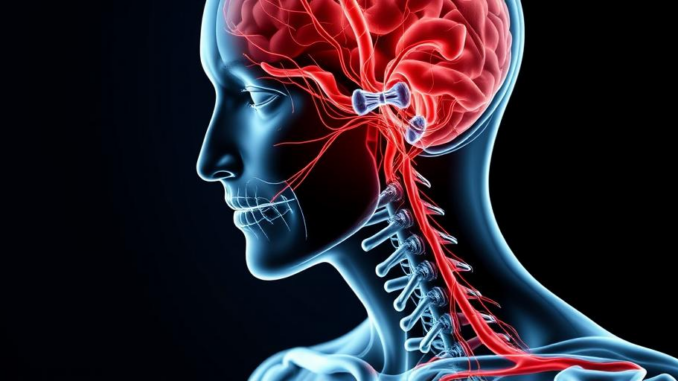
Summary
MicroTransponder secures $65 million in Series F funding to advance Vivistim, a groundbreaking vagus nerve stimulation system for stroke rehabilitation. Vivistim, paired with physical therapy, significantly improves upper extremity motor function in stroke survivors. This funding will expand market reach and solidify Vivistim as a standard of care.
Reliability and uptime matter in healthcare TrueNAS provides 24/7 support when it counts.
** Main Story**
Okay, so MicroTransponder just landed a cool $65 million in Series F funding, which is huge news for stroke recovery. They’re really pushing their Vivistim Paired VNS™ System, and honestly, it’s looking like a game-changer for folks struggling to regain movement after a stroke. This funding round, especially with U.S. Venture Partners (USVP) leading the charge, it’s a major vote of confidence, you know? It shows people are really believing in what Vivistim can do.
How Does Vivistim Actually Work?
So, Vivistim isn’t just some run-of-the-mill nerve stimulator. It’s actually a pretty clever system that uses paired vagus nerve stimulation (VNS) to seriously boost the effects of good old physical and occupational therapy. Basically, they implant a tiny device that sends mild electrical pulses to the vagus nerve – it’s like a superhighway connecting your brain and body. Here is the kicker, these pulses are timed perfectly with your therapy exercises.
Think of it like this: when you’re doing your exercises and the device is sending those little pulses, it’s supercharging your brain’s neuroplasticity. What is neuroplasticity? Well, it’s your brain’s ability to rewire itself and make new connections. It’s how stroke patients can relearn basic movements. These pulses make that process way more efficient, helping stroke survivors get back function in their arms and hands. For example, my aunt had a stroke a few years back, it took her forever to be able to feed herself, something like this would have made all the difference.
Plus, get this, real-world results have shown that Vivistim plus therapy leads to like, a two- to threefold improvement in arm function compared to just plain old therapy. That’s pretty impressive, isn’t it?
Impact: Changing the Game
Vivistim’s already FDA-approved, and it’s starting to make waves, which is awesome. Richard Foust, MicroTransponder’s CEO, pointed out that they’ve already got programs in a pretty significant chunk of top stroke centers. What’s the secret? Well, they’re positioning Vivistim as the evidence-based solution that’s been missing for chronic stroke recovery. I mean, if you were a stroke patient, wouldn’t you want to give it a shot?
That said, this new funding will seriously help them expand access and ramp up education, so more patients and doctors know what it’s capable of. And let’s be honest, we can’t have too much awareness when it comes to innovative medical solutions.
The Future of Stroke Rehab?
Honestly, Vivistim really shows what can happen when you combine cutting-edge tech with solid rehab practices. It’s a really transformative solution. MicroTransponder is doing the right thing by focusing on the data, working closely with hospitals, and paving the way for a future where stroke recovery is, well, a lot more effective. As of March 15, 2025, this funding feels like a turning point, and hopefully, the development and spread of Vivistim will make a real difference in the lives of those affected by stroke. What do you think, is this the future we’ve been waiting for?


Vagus nerve stimulation timed with exercise? Sounds like a high-tech puppet master pulling the strings of recovery! Forget two- to threefold improvement, I’m holding out for Wolverine-level regeneration. Sign me up for the cyborg future of stroke rehab!
Love the enthusiasm! Wolverine-level regeneration might be a stretch for now, but you’re right, the potential is exciting. The beauty of neuroplasticity is that we are only scratching the surface. Maybe one day we can make that level of recover a reality. Thanks for the comment!
Editor: MedTechNews.Uk
Thank you to our Sponsor Esdebe
Vagus nerve stimulation timed with exercise? I’m picturing tiny robots inside us, not just boosting recovery, but also judging our form. “Another rep with that sloppy posture, Dave? Negative progress!”
That’s hilarious! I love the image of posture-correcting robots. On a serious note, though, precise timing *is* key to Vivistim’s effectiveness. It’s all about maximizing neuroplasticity during the exercises, but maybe robots in the future!
Editor: MedTechNews.Uk
Thank you to our Sponsor Esdebe
Two- to threefold improvement, eh? Guess I’ll trade my gym membership for a Vivistim subscription. Finally, a shortcut to arm day gains! Now accepting bets on whether it’ll come with an option for bicep-specific zaps.
Haha, love the idea of trading gym memberships! While we’re not *quite* at bicep-specific zaps yet, the precision of VNS is improving all the time. Perhaps in the future we can use it for that. Maybe we should make a system that prevents DOMS after arm day!
Editor: MedTechNews.Uk
Thank you to our Sponsor Esdebe